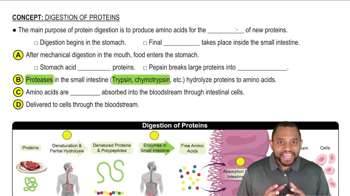Describe the similarities and differences of the following polysaccharides:
(a) amylose and amylopectin
 Verified step by step guidance
Verified step by step guidance Verified video answer for a similar problem:
Verified video answer for a similar problem:



 1:24m
1:24mMaster Polysaccharides Example 1 with a bite sized video explanation from Jules
Start learning